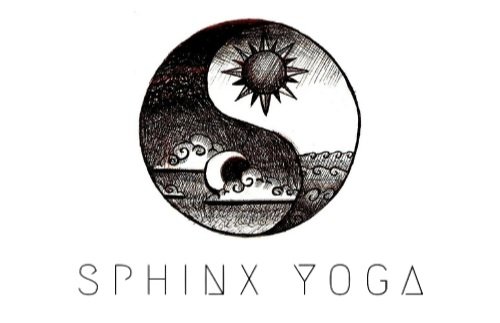Fascia & Myth Busting
A fly by tour of a seemingly endless topic!
𝗪𝗵𝗮𝘁 𝗶𝘀 𝗳𝗮𝘀𝗰𝗶𝗮?
In the words of one of my teacher's Sam Burkey, fascia is our 'silver surfer suit'! Connective tissue that forms a continuous web all around our bodies, covering our bones, muscles, arteries, veins, nerves and internal organs. Think of the slimy 'outer skin' that you might take off a chicken breast - well this is what we have dancing all throughout our body in fascinating patterns or 'trains/chains'. A shimmery, silver web of interconnectivity (almost like the flow of universal consciousness that moves through everything has a microcosm in our physical bodies!)
𝗪𝗵𝗮𝘁 𝗱𝗼𝗲𝘀 𝗶𝘁 𝗱𝗼?
As well as supporting and shaping the structures of our body, fascia can facilitate smoother movement through the moveable 'wrapping' it provides, allowing body parts to 'glide' over each other. So it both helps to separate parts of our body, and integrate them as a whole - it's a real embodiment of non-dualism! Some areas of fascia also support movement through storing and releasing energy - think of the 'spring' that the plantar fascia on the bottom of our feet helps to create as we walk.
Much of our fascia is innervated by sensory nerves, so fascia can support us with proprioception (awareness of where our body is and how it is moving in space), nociception (awareness of pain) and interoception (awareness of our internal state).
𝗪𝗵𝘆 𝗶𝘀 𝗶𝘁 𝗶𝗺𝗽𝗼𝗿𝘁𝗮𝗻𝘁?
Well, as it's alllll over us it's pretty interesting to pay attention to the role of fascia and how we can optimise it so we can move smoothly and stay healthy. Issues can arise when fascia is irritated, torn, tight or inflamed. This can lead to tightness, range of movement limitations, pain and more. Healthy fascia liberates our body (smooth, slinky, soft), restricted fascia holds it back (stiff, tight, restricted).
Tom Myers writes beautifully about fascia here: https://www.yogajournal.com/.../what-you-need-to-know.../
As the role and importance of fascia has become ever more apparent, it seems the yoga world has become a little obsessed! But are all of the claims made about fascia accurate?
𝗠𝘆𝘁𝗵 𝟭: 𝗪𝗲 𝗰𝗮𝗻 𝘀𝗽𝗲𝗰𝗶𝗳𝗶𝗰𝗮𝗹𝗹𝘆 𝘁𝗮𝗿𝗴𝗲𝘁 𝗳𝗮𝘀𝗰𝗶𝗮 𝗶𝗻 𝘆𝗼𝗴𝗮 (very common in yin yoga specifically)
- As fascia is EVERYWHERE it's very hard (?impossible) to target it specifically, rather we can have an effect on our body generally, which may well include over time an impact on our fascia. Fascia takes about three years to restructure, so whilst a consistent yoga practice may well lead to changes in the architecture of our fascia, it is misleading to suggest that a certain pose or movement will be leading to the the fascia 'releasing/lubricating/stretching' etc. in that moment or class. However the movements we make will be helping this to happen over time.
𝗠𝘆𝘁𝗵 𝟮: 𝗠𝘆𝗼𝗳𝗮𝘀𝗰𝗶𝗮𝗹 𝗿𝗲𝗹𝗲𝗮𝘀𝗲 𝗯𝗿𝗲𝗮𝗸𝘀 𝗱𝗼𝘄𝗻 𝗳𝗮𝘀𝗰𝗶𝗮𝗹 𝗮𝗱𝗵𝗲𝘀𝗶𝗼𝗻𝘀
- Behm & Wilke (2019) share that the force needed to break up or remove myofascial (the fascia of muscles) adhesions would far exceed the limits of most humans and massage implements/foam rollers/massage balls. Rather myofascial release is likely to be beneficial as it can be relaxing via stimulation of the parasympathetic nervous system, it can introduce intense sensations to take the focus off of other areas that might be painful, and it gives all the wonderful benefits that massage does (including increase circulation, reduced pain, increased hydration etc), because, well, it is massage! In fact Behm & Wilke suggest that calling things myofascial release rather than massage is misleading and a misnomer. We have loads of great research for massage, so maybe let's stick with this term to keep it more accurate?
In summary 'myofascial release' is great because it is massage, having a general affect, not because it is specifically releasing our myo-fascia. So keep using your massage balls and foam rollers - they work fantastically, just not specifically on myofascia, rather generally on that area of the body including the myofascia.
Every year I learn new things about fascia so please feel free to challenge me, question me or add new info!
More fascia myth busting here: https://yogainternational.com/.../fascia-myths-and.../
and here: https://www.youtube.com/watch?v=foDXe69YuFI
Behm & Wilke here: https://pubmed.ncbi.nlm.nih.gov/31256353/
